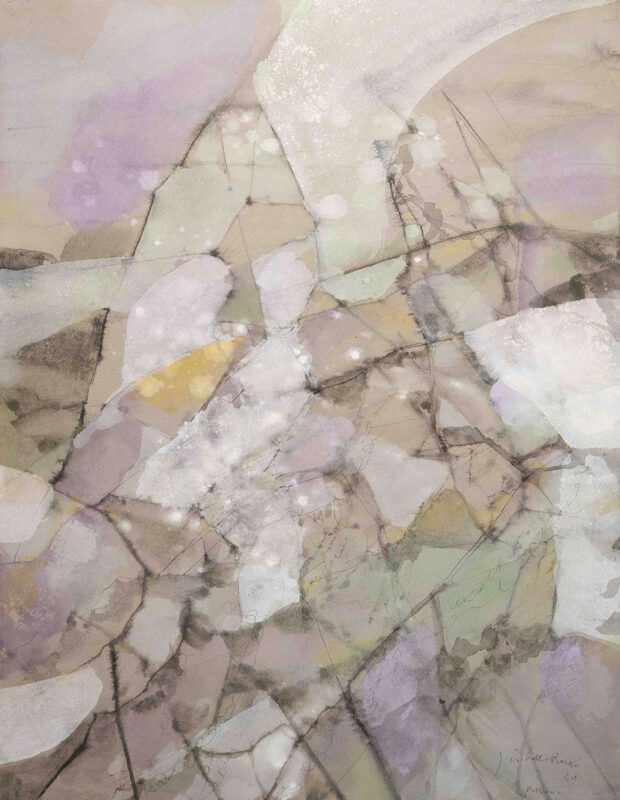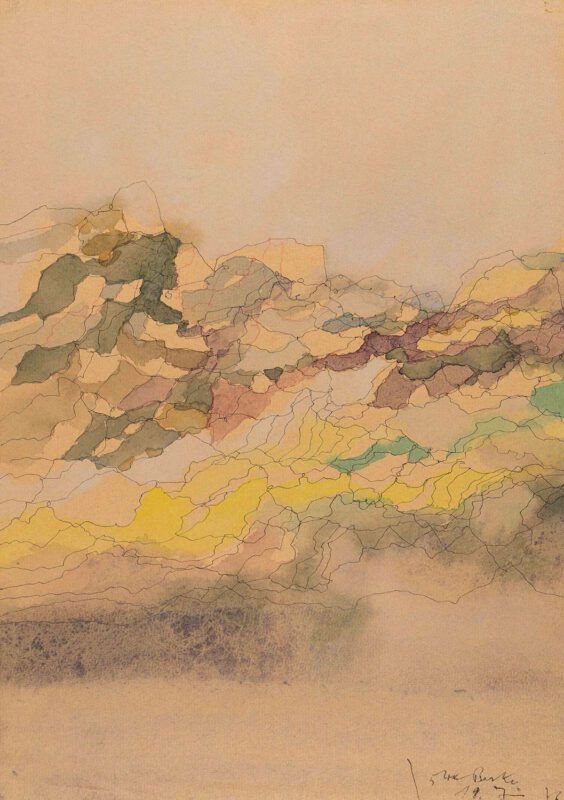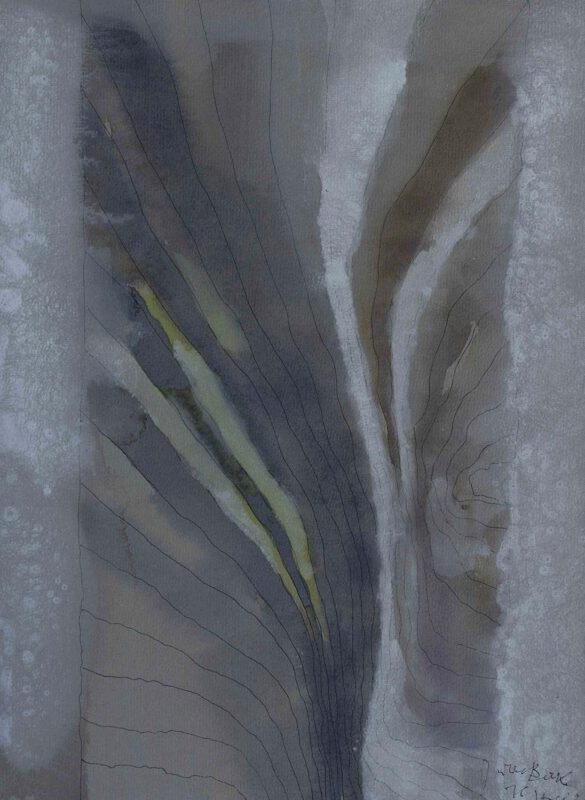Berke finds inspiration for his oil and watercolor paintings during frequent trips abroad. He paints on site as well as from memory and creates a recollection of scenic impressions and momentary atmospheres. He himself describes his process as an intensive experience of one’s journey: “The experience is of nature, but the arrangement is seperate, independent of nature. The experience is created through the means of comositing, critically skipping some elements, adding certain forms and formations.”
(Hubert Berke, 1962)


These landscape paintings make up an important part of his body of work, especially from the 1960ies onwards. Next to numerous oil and watercolor paintings, Berke creates sculptures made of different, found and gathered materials as well as mixed media works that encompass physical traces and remnants of the places visited. “Through the forms of nature one can enter into the vast space of mental formations. All form that the human mind can make up, even the abstract ones, can be found in nature. […] But through mental and spiritual expression, one can give it a uniform value. Like making music out of notes that already exist, as one can create poetry out of words that can be found in the dictionary – one only needs to compose and hold up mental discipline.”
(Hubert Berke, 1962)
During his trip to Spain in 1952, Berke creates landscape and city views, mainly in the form of realistic watercolor paintings using empty space as a stylistic means.


The Sylt-series created from 1963 onwards, marks a shift from naturally and coincidentally dispersed elements to more serial structures.
The paintings of Syria are coined by Berkes experience of the desert and its appearance on the one hand and his encounter of the vibrant history present in archeological sites and the traces of a lost world he finds everywhere on the other. Eerie and bizarre aspects of the desert are paired with stories about Alexander the Great which shows in the use of figures and creates a body of work of versatile expression.
Berke continues to paint in this style during his trip to Provence in 1969. Here as well, he combines impressions of color and light with figures.
Twice he visits the island of Crete (1972 and 1975) and creates paintings in vibrant colors, relinquishes historical and figurative elements and concentrates on the beauty of the landscape and its colorful spring vegetation.


In 1973, Berke buys a little piece of land with a holiday home hidden in the dunes on the dutch island of Schowen. He henceforth spends a lot of time there and paints his impressions of this environment. He says: “Looking out for unusual sceneries, I enjoy the solitude in my house in pure fulfillment.” The sequences he paints deal with the water, the sky and the tides and their relations with each other. Here as well he makes use of and incorporates found material in his paintings and sculptures.
In 1978, he makes his last trip to the south of Italy, including the city of Herculaneum, which this series is named after. But contrary to the Alexander series, Berke interprets the roman antiquity not through figures but through forms like regular shapes, circles as well as handwritten quotes.


























































